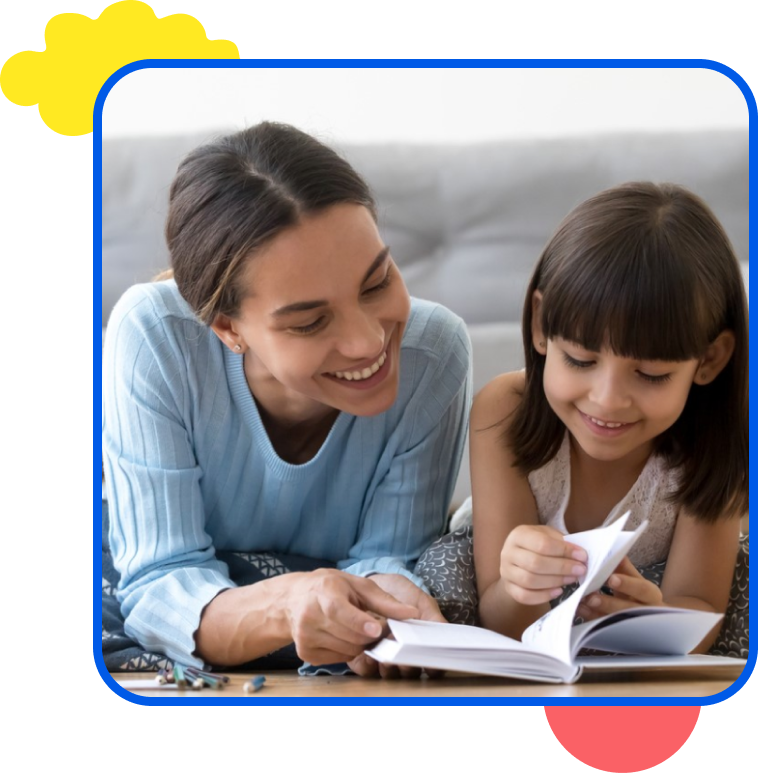Educator-Endorsed: Uncovering the Best 22 Books for Kids Learning English



Embarking on the journey of English language acquisition is a crucial step for children, and as educators, we recognize the importance of choosing literature that facilitates this process. This article reveals our recommendations – the top 22 books that we, as school teachers, wholeheartedly support. These books play a pivotal role in enhancing kids’ English language skills while nurturing a genuine passion for reading.
1. Where the Wild Things Are by Maurice Sendak:
- Age Group: 3-6 years
- Why teachers recommend it: Sparks creativity and introduces descriptive language, making it an ideal tool for expanding vocabulary.
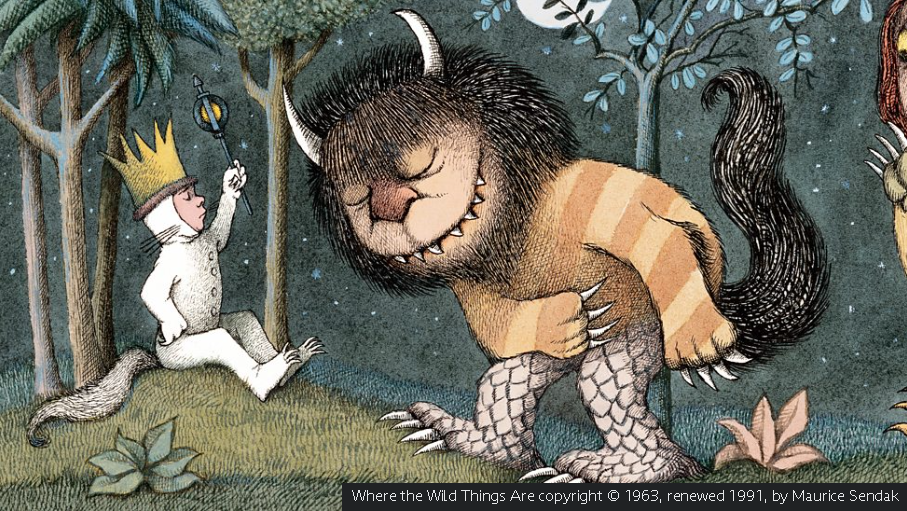
2. The Very Hungry Caterpillar by Eric Carle:
- Age Group: 2-5 years
- Why teachers recommend it: Seamlessly integrates days of the week, numbers, and food vocabulary, offering a comprehensive language learning experience.
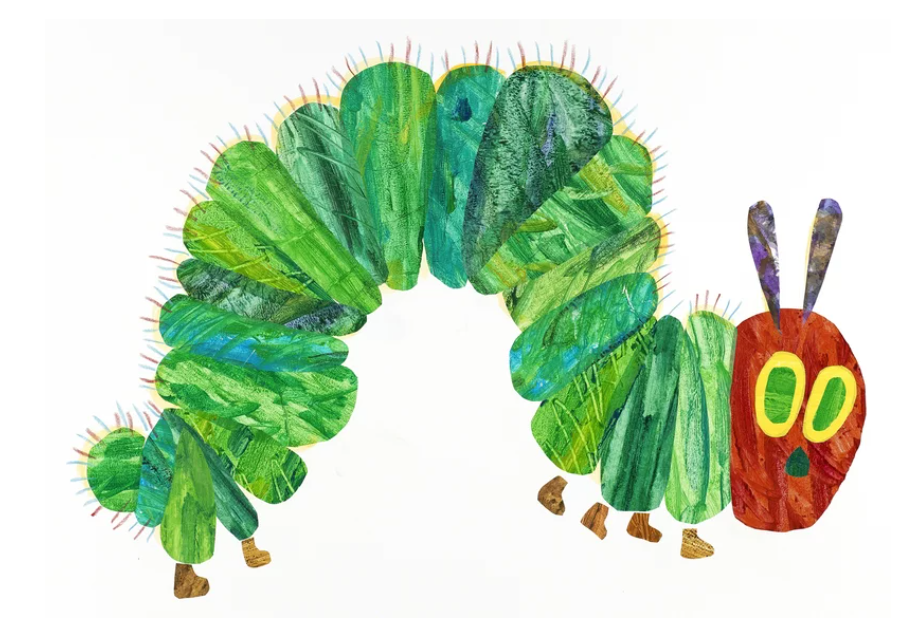
3. Charlotte’s Web by E.B. White:
- Age Group: 7-10 Years
- Why teachers recommend it: Engages students emotionally, exposing them to a rich array of words within a heartwarming narrative.
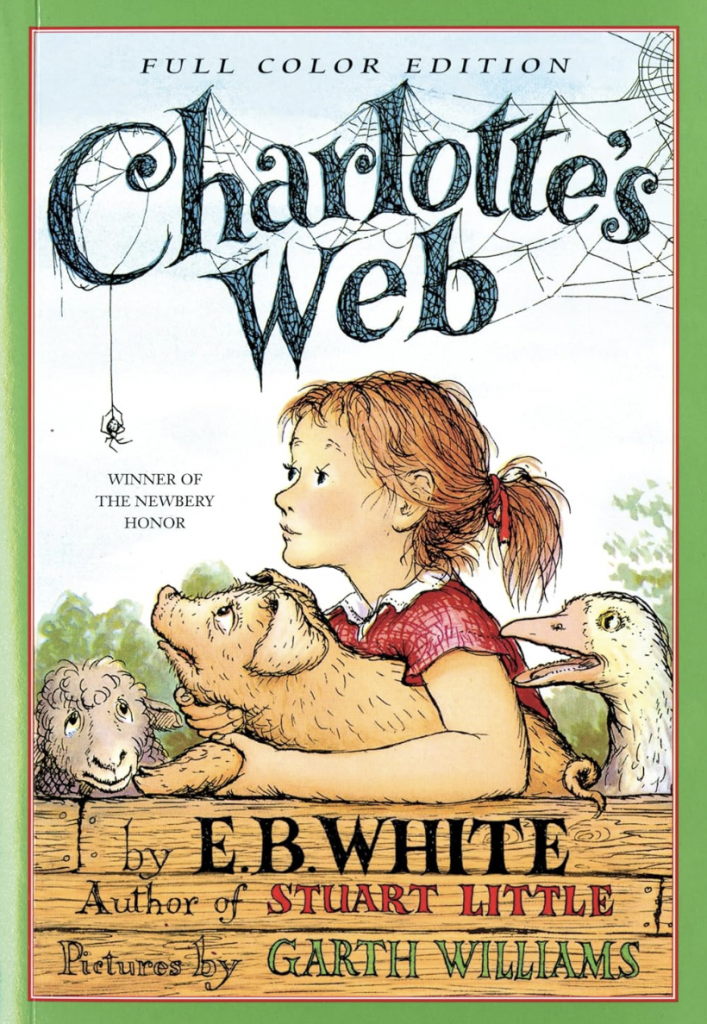
4. Matilda by Roald Dahl:
- Age Group: 9-12 Years
- Why teachers recommend it: Expands vocabulary with advanced language, fostering a love for reading and improving comprehension skills.

5. Brown Bear, Brown Bear, What Do You See? by Bill Martin Jr.:
- Age Group: 2-4 Years
- Why teachers recommend it: Reinforces color and animal vocabulary through repetition and visually appealing illustrations.
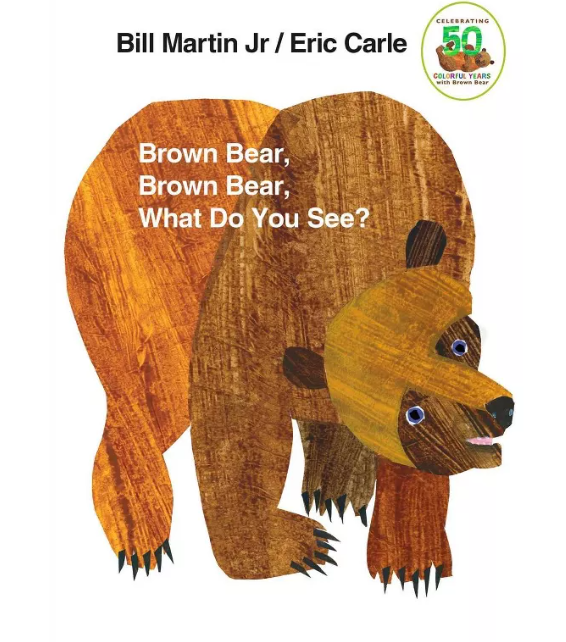
6. Alice’s Adventures in Wonderland by Lewis Carroll:
- Age Group: 8-12 Years
- Why teachers recommend it:Introduces whimsical language and imaginative storytelling, encouraging language exploration and critical thinking.

7. The Cat in the Hat by Dr. Seuss:
- Age Group: 4-8 Years
- Why teachers recommend it:Captivates young readers with rhymes, promoting phonetic awareness and playful language exploration.

8. Harry Potter and the Sorcerer’s Stone by J.K. Rowling:
- Age Group: 9-12 Years
- Why teachers recommend it: Ignites a love for reading and advances language proficiency with a magical journey and rich vocabulary.

9. Green Eggs and Ham by Dr. Seuss:
- Age Group: 3-7 years
- Why teachers recommend it: Fosters language development through Dr. Seuss’s signature rhyming style, making learning enjoyable.
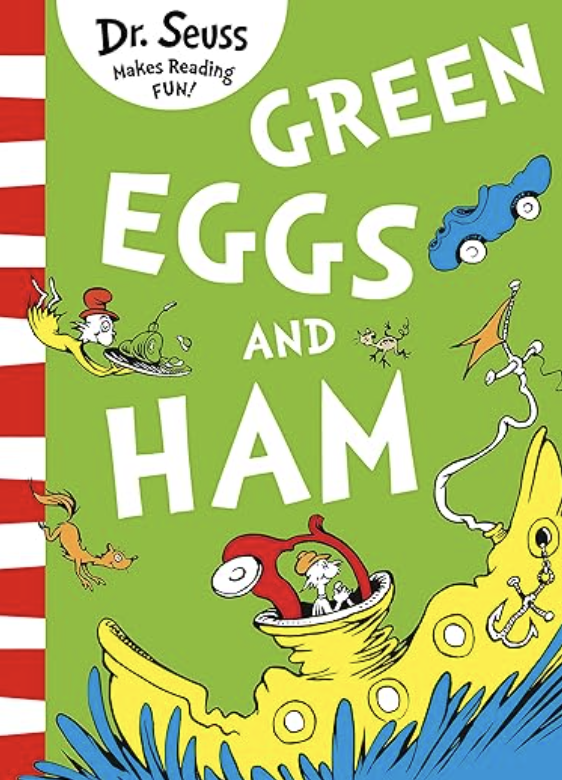
10. The Tale of Peter Rabbit by Beatrix Potter:
- Age Group: 4-8 years
- Why teachers recommend it: Expands vocabulary through a classic story while introducing the world of Peter Rabbit in an accessible way.

11. The Gruffalo by Julia Donaldson:
- Age Group:3-7 years
- Why teachers recommend it: Captivates young minds with a clever narrative, aiding in vocabulary expansion and comprehension.
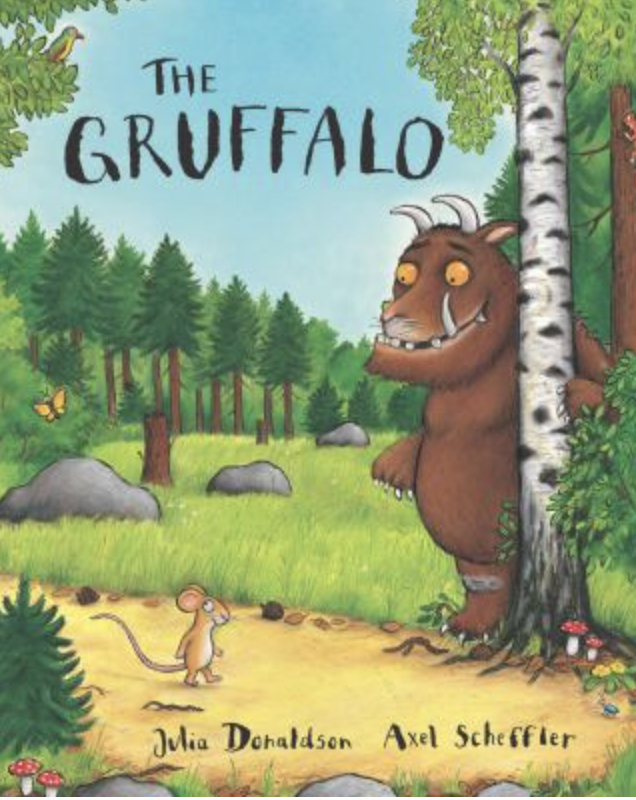
12. Winnie-the-Pooh by A.A. Milne:
- Age Group: 5-9 years
- Why teachers recommend it: Immerse children in the charm of A.A. Milne’s timeless characters, promoting language development and moral lessons.

13.Goodnight Moon by Margaret Wise Brown:
- Age Group: 2-5 years
- Why teachers recommend it: Develops language skills with its simple yet effective bedtime story structure, enhancing vocabulary.
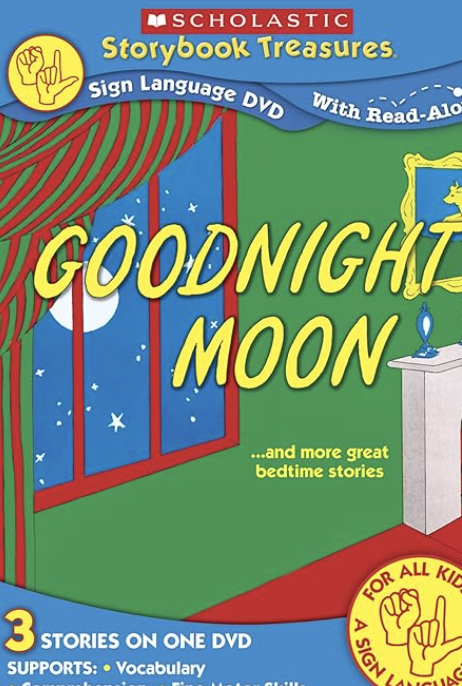
14. The Chronicles of Narnia by C.S. Lewis:
- Age Group:9-12 years
- Why teachers recommend it:Journeys through a fantastical world, enriching language comprehension and introducing advanced vocabulary.

15. Madeline by Ludwig Bemelmans:
- Age Group:4-8 years
- Why teachers recommend it:Learn English through the adventures of the spirited Madeline, combining language development with engaging storytelling.

16. The Velveteen Rabbit by Margery Williams:
- Age Group: 6-10 years
- Why teachers recommend it: Explores themes of love and friendship, advancing language abilities in a touching narrative.

17. Percy Jackson & the Olympians by Rick Riordan:
- Age Group: 9-12 years
- Why teachers recommend it: Introduces mythology and expands vocabulary in a gripping series tailored for young readers.

18. Stellaluna by Janell Cannon:
- Age Group: 5-8 years
- Why teachers recommend it: Delves into language and science concepts with a bat-filled tale, making learning both educational and entertaining.

19. The Secret Garden by Frances Hodgson Burnett:
- Age Group: 8-12 years
- Why teachers recommend it:Uncover the wonders of language and nature in this timeless classic, fostering a love for descriptive language.
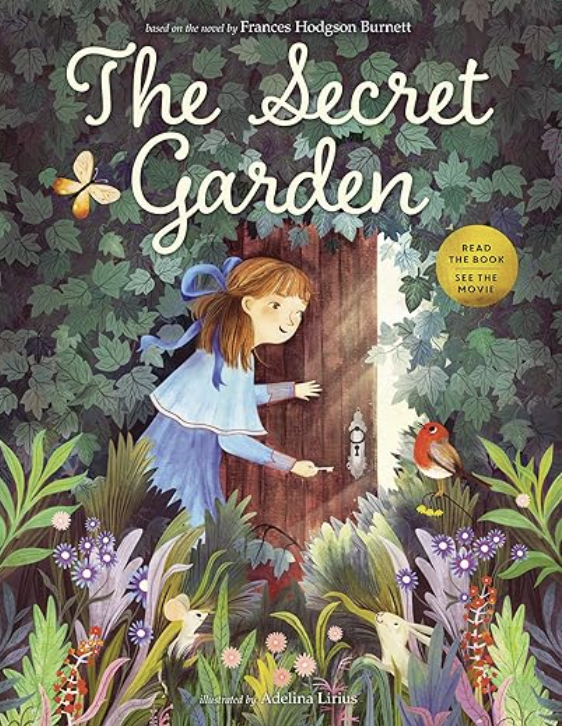
20. The Giving Tree by Shel Silverstein:
- Age Group: 5-9 years
- Why teachers recommend it: Teaches about generosity and language in a touching story, promoting emotional and language development.
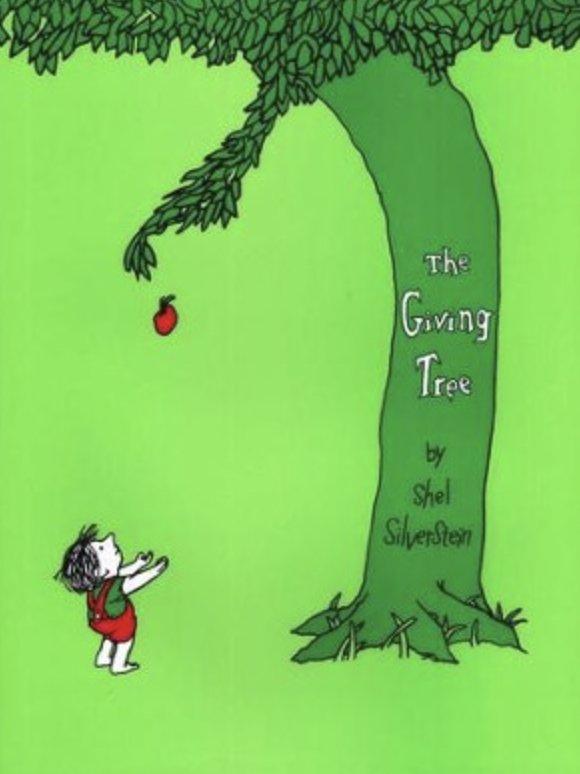
21. Little Women by Louisa May Alcott:
- Age Group: 10-14 years
- Why teachers recommend it: Introduces kids to classic literature, enhancing language skills through rich storytelling.

22. Peter Pan by J.M. Barrie:
- Age Group: 6-12 years
- Why teachers recommend it: Embark on a magical journey while building English language capabilities through timeless adventure and enchanting language.

Conclusion:
As dedicated educators, we firmly believe that these 22 books are indispensable tools for children’s language development. By incorporating these literary gems into your child’s reading routine, you provide not only captivating stories but also foster a lifelong love for the English language. These recommendations aim to make the journey of learning English both enriching and joyous for your young learners.
Get a free online English class for kids!
If you want to take your child’s English skills to the next level and give them a shot at true proficiency, consider LingoCircle’s online English classes for kids ages 3-15.
Our online group classes offer a chance for your child to dive deep into English with fun interactive lessons designed by certified, native-speaking teachers. We also offer a range of English classes tailored to your child’s age and proficiency level.
We offer full immersion or dual language options for multilingual families, classes aligned with traditional English preschool and elementary education curricula, and English as a Second Language courses.
Want to see which option is the best for your child? Sign up for LingoCircle’s free trial class!

Is your child learning Spanish? Well, poetry can be a fantastic way to supplement traditional language learning methods! Why? Because a good Spanish poem will invite them into the language’s rhythm, words, and expressions.
In this blog post, we’ll share nine fantastic Spanish poems for kids. We’ll also discuss how poetry can benefit a child’s language learning and offer helpful tips and activities.
At the end, we’ll also show you how to get a free online Spanish class for kids.
Let’s begin!
9 Spanish Poems for Kids
To curate the following list, we searched for Spanish poems that not only grab kids’ attention but also seamlessly integrate vocabulary essential for daily life and conversations.
We’re sure you’ll find at least one poem here that you and your child will love!
Spanish Poem 1: El patio de mi casa
El patio de mi casa is actually a popular Spanish song for kids with fun choreography. But you can also read it as a poem! It’s great for learning the rhythm of the Spanish language.
Spanish Poem 2: Tengo una muñeca
This fun poem is also melodic and might get your singing in Spanish! It’s about a doll and is excellent for reinforcing vocabulary for clothing and numbers.
Spanish Poem 3: La mariposa
This poem comes from Federico García Lorca, one of the most renowned Spanish poets in history. It’s about observing the beauty of a butterfly. You and your child could read this poem together and then try writing your own poems about butterflies or other animals.
Spanish Poem 4: El libro
This short poem is fantastic for kids who love reading. It talks about the magical power of books to illuminate our lives and show us new ways of seeing the world.
Spanish Poem 5: Vivo en una casa
Are you trying to help your child learn how to describe their house and home? This poem is a great way to review essential vocabulary. After reading this poem, you can help your child write a poem about their home in Spanish!
Spanish Poem 6: A mí me gusta el verano
This poem is fantastic for helping beginners learn to use the verb gustar (to like) and talk about the summer season. After reading the poem, you can help your child write a new poem about why they like their favorite season.
Spanish Poem 7: Mi familia
Here’s another cute poem in Spanish that will help reinforce family vocabulary. It’s about a child receiving loving kisses from each family member.
Spanish Poem 8: Quiero ir al colegio
This short poem in Spanish is about a child who’s excited to go to school in the morning. It’s a great way for your child to review common verbs and learn how to describe their school day.
Spanish Poem 9: Me parezco
This last poem is short, fun, and about a topic many kids love: animals. It’s an excellent way for your child to memorize the names of several animals in Spanish, as well as vocabulary for body parts.
Benefits of Using Poetry to Learn Spanish
So, why poetry? Because it’s more than rhymes—it’s a powerful ally in making Spanish learning exciting and effective for your child! Here are some of the top benefits of using poetry to help your child learn Spanish.
Enhanced Vocabulary
Poetry introduces a variety of words and expressions in a creative context. Kids can pick up new Spanish words effortlessly, expanding their vocabulary in an enjoyable way.
Improved Pronunciation
Reading and reciting poems help develop proper pronunciation and intonation, making learning Spanish sounds more natural and fun.
Cultural Awareness
Through poems, kids get a taste of the rich Spanish-speaking cultures. This is one of the major benefits of learning a language, after all. Children’s worldviews expand while learning the traditions and stories of the language.
Boosted Cognitive Skills
Engaging with poetry sparks creativity and critical thinking. Kids learn to analyze and interpret, enhancing cognitive skills that go beyond language acquisition.
Language Structure Understanding
Poetry tends to follow specific structures, helping kids grasp grammar and sentence construction in a rhythmic way. It helps build a strong language foundation while having fun with words.
Tips and Activities for Incorporating Spanish Poetry into Language Learning
By incorporating the following tips and activities into your child’s language learning routine, you can make learning Spanish immersive and fun for your child. You might also build the foundation for an intellectually engaging hobby!
Spanish poem of the day
Incorporate a daily dose of Spanish poetry into your child’s routine with a “Poem of the Day” approach. Select a short poem and read or recite it together, discussing unfamiliar words or phrases. This consistent exposure builds familiarity and comfort with the language.
Poetry writing project
Create a collaborative poetry project by encouraging your child to write their own short poems in Spanish. Provide guidance on vocabulary and structure, encouraging creativity while reinforcing language skills. Display their masterpieces on the fridge for a sense of accomplishment!
Poetry flashcards
Transform traditional language flashcards into interactive poetry cards. Select keywords from a poem. Then, create flashcards with the Spanish word on one side and a corresponding image on the other. Use these cards for engaging vocabulary games.
Family poetry night
Want a fun way to learn Spanish as a family? Host a family poetry night where each member selects and reads a favorite Spanish poem. Discuss the themes, share interpretations, and celebrate the diversity of voices within the Spanish language. This activity not only reinforces language skills but also promotes cultural understanding within the family.
Interactive poetry readings
As you and your child go through Spanish poems together, take turns reading lines or stanzas, transforming it into a collaborative effort. This approach strengthens your child’s language skills and instills confidence in their Spanish pronunciation.
How to Get a Free Online Spanish Class for Kids
While Spanish poems are a fantastic language-learning resource, they’re not enough if your goal is to raise bilingual children.
We recommend incorporating regular Spanish language classes to ensure your child learns to confidently speak, read, understand, and write Spanish.
Why Choose LingoCircle
LingoCircle provides online Spanish classes for kids, featuring:
- Experienced teachers. Our team consists of experienced, passionate, native Spanish-speaking instructors specializing in online language teaching for children aged 3-15. They understand the unique needs of young learners, ensuring an engaging and effective language-learning experience.
- Interactive lessons. Using a variety of activities, games, and multimedia, our teachers keep children excited about learning Spanish. The interactive nature of our lessons ensures active participation, making language acquisition a dynamic and enjoyable process.
- Fun learning environment. Learning should be enjoyable, and that’s precisely what LingoCircle offers! Our classes create a supportive and fun environment where kids thrive alongside peers from around the world.
Ready to explore if online Spanish classes are suitable for your child? Click here to get your first class for free!

Want to make learning French something your child looks forward to every day? This list of French learning apps for kids might do the trick!
We’ve compiled 12 of the best apps to learn French suitable for children of all ages. Here, you’ll find information on why we like each app, how much it costs, its user ratings, and links to download quickly.
At the end of the blog post, we also share additional ways to help your child become bilingual in French, including how to get a free online French class for kids!
Whether your child is just starting to learn French or already has some proficiency, there’s an app in this blog post to help take their French skills to the next level.
Let’s begin!
12 of the Best French Learning Apps for Kids
#1 Boukili
Boukili is an amazing app that aims to help children learn to read in French. The app provides free access to hundreds of illustrated books, games, and quizzes. The immersive and interactive experience of Boukili is a fantastic way to encourage your child to fall in love with reading and the French language!
Ideal age range
4+ years old
User reviews and ratings
Apple App Store: 3/5 star rating
Google Play Store: 5/5 star rating
Price
Free
Download links
Download on the Apple App Store
Download on the Google Play Store
#2 LudiTab
LudiTab isn’t just one French learning app for kids; it’s a series of four apps providing a well-rounded French learning experience for kids! These apps help young children practice learning French while doing educational activities.
It’s a fantastic series of apps for kids who come from French-speaking families. It helps reinforce concepts and vocabulary that might not be learned outside of a traditional French education system or bilingual French language classes.
Ideal age range
3-6 years old
User reviews and ratings
Apple App Store: 4.2-5/5 star rating
Price
Free
Download links
LudiTab Tailles dans l’App Store
LudiTab Numération dans l’App Store
LudiTab Formes géométriques dans l’App Store
LudiTab Repérage dans l’espace dans l’App Store
#3 Gus on the Go: French for Kids
Gus on the Go: French for Kids is a fun way for your child to learn French vocabulary while diving into stories in French. In this app, they’ll join Gus on a trip through Paris, Lyon, Toulouse, and Marseille. Along the way, they learn new words related to animals, food, transportation, clothes, numbers, and more.
Ideal age range
0–5 years old
User reviews and ratings
Apple App Store: 4.3/5 star rating
Google Play Store: 2.8/5 star rating
Amazon Store: 3.4/5 star rating
Price
$3.99
Download links
Download on the Apple App Store
Download on the Google Play Store
#4 Bayam – Jeux Éducatifs Enfants
Bayam is another great app to help your child practice French with interactive stories, games, cartoons, podcasts, documentaries, and more! Within the premium version of the app, there are over 2,000 activities. A premium subscription can also be shared across six accounts, making it great for families with multiple children simultaneously learning French.
Ideal age range
3-10 years old
User reviews and ratings
Apple App Store: 4.6/5 star rating
Google Play Store: 4/5 star rating
Price
Free
5.99 euros/month for premium version
Download links
Download on the Apple App Store
Download on the Google Play Store
#5 Studycat: French
Studycat offers bite-sized French lessons for kids that are interactive and immersive. All of Studycat’s activities are entirely in French to help children learn to pick up French pronunciation, tones, expressions, and accents without the interference of English. The app also has speaking challenges to help kids accelerate their confidence in using French in their everyday lives.
Ideal age range
3-8 years old
User reviews and ratings
Apple App Store: 4.5/5 star rating
Google Play Store: 4.2/5 star rating
Price
Free
Download links
Download on the Apple App Store
Download on the Google Play Store
#6 Babbel French
With just 15 minutes of daily practice on the Babbel app, your child can immerse themselves in French with interactive listening, speaking, reading, and writing activities. The app also incorporates cutting-edge speech recognition technology to help your child improve their French pronunciation skills.
Ideal age range
12+ years old
User reviews and ratings
Apple App Store: 4.7/5 star rating
Google Play Store: 4.6/5 star rating
Price
Free
In-app purchases:
- 1-month plan: $17.99
- 3-month plan: $45.99
- 1-year plan: $89.99
Download links
Download on the Apple App Store
Download on the Google Play Store
#7 Duolingo French
With just 5 minutes of interactive games and daily lessons, Duolingo is an excellent way to introduce French to kids. In the app, your child will find lessons that help them improve their reading, listening, and speaking abilities. What makes Duolingo so popular with language learners worldwide? Fun challenges, reminders from Duo, the owl, and engaging exercises that make learning a language entertaining and easy.
Ideal age range
4+ years old
User reviews and ratings
Apple App Store: 4.7/5 star rating
Google Play Store: 4.7/5 star rating
Price
Free
Download links
Download on the Apple App Store
Download on the Google Play Store
#8 LingoDeer
Designed by expert language teachers, LingoDeer’s French lessons provide an engaging and interactive way for your child to practice French. The app aims to teach users to read and write in French, understand grammar rules, and practice listening skills with audio recordings of native French speakers. LingoDeer also reinforces the lesson material through flashcards and quizzes.
Ideal age range
4+ years old
User reviews and ratings
Apple App Store: 4.7/5 star rating
Google Play Store: 4.5/5 star rating
Price
Free
In-app purchases:
- Monthly Subscription: $14.99
- Quarterly Subscription: $39.99
- Annual Subscription: $159.99
- Lifetime Subscription: $299.99
- 50% discounts may be available for annual and lifetime subscriptions
Download links
Download on the Apple App Store
Download on the Google Play Store
#9 Memrise
Memrise is a fantastic app that can help kids master core French vocabulary and phrases that can be used in real-life conversations. One exceptional feature is MemBot, an AI language tutor that allows your child to practice speaking French and receive feedback.
Ideal age range
12+ years old
User reviews and ratings
Apple App Store: 4.7/5 star rating
Google Play Store: 4.6/5 star rating
Price
Free
In-app purchases:
- Monthly Subscription: $14.99
- Annual Subscription: $89.99
- Lifetime Subscription: $199.99
Download links
Download on the Google Play Store
Download on the Apple App Store
#10 FunEasyLearn French
FunEasyLearn French helps users learn the most useful words, sentences, and expressions in the French language. The app also uses fun illustrations to help kids and adults memorize vocabulary quickly, audio recordings of native speakers to improve listening skills, and speech recognition technology to help improve tricky French pronunciation rules.
Ideal age range
4+ years old
User reviews and ratings
Apple App Store: 4.7/5 star rating
Google Play Store: 4.5/5 star rating
Price
Free
In-app purchases:
- 1 Month of Premium: $3.99
- 6 Months of Premium: $14.99
- 12 Months of Premium: $21.99
- Lifetime Premium: $49.99
Download links
Download on the Apple App Store
Download on the Google Play Store
#11 Mango Languages
The Mango Languages app focuses on real-life conversational skills, providing native-speaker audio and cultural context for an immersive French learning experience. The comprehensive courses cover vocabulary, pronunciation, grammar, and culture. This makes it a great resource to help older children quickly pick up practical French skills.
Ideal age range
12+ years old
User reviews and ratings
Apple App Store: 4.8/5 star rating
Google Play Store: 4.8/5 star rating
Price
Free
In-app purchases:
- Single Language – Monthly: $7.99
- All Languages – Monthly: $17.99
Download links
Download on the Apple App Store
Download on the Google Play Store
#12 TV5MONDE
This app from the TV5MONDE channel is a fantastic resource for older children with some proficiency in French! It provides on-demand access to a large selection of news broadcasts, documentaries, must-see TV shows, and more from the French world. It’s a wonderful tool to help children build reading and listening comprehension skills while also boosting cultural awareness.
Ideal age range
12+ years old
User reviews and ratings
Apple App Store: 4.6/5 star rating
Google Play Store: 3.9/5 star rating
Price
Free
Download links
Download on the Apple App Store
Download on the Google Play Store
Other ways to help your child learn French
While French learning apps can be fantastic additions to your child’s language learning routine, language learning apps won’t turn your child into a fluent French speaker. Language acquisition requires a dynamic approach, encouraging interaction with authentic resources and native speakers.
Here are a few additional ways to support your child’s journey to becoming a proficient French speaker.
Enroll in French classes for kids
For a structured and dynamic learning experience, consider enrolling your child in French classes for kids. Language classes provide a supportive and fun environment where children can improve listening, reading, writing, and speaking skills with the help of native-speaking teachers.
Watch French cartoons, movies, and TV shows
No matter the language, cartoons, movies, and TV shows are fantastic resources to make learning languages fun and entertaining for kids! French cartoons, movies, and TV shows are also helpful for exposing your child to French language culture.
Read French children’s books
Reading French children’s books is another excellent way to engage your child’s imagination while helping them pick up useful vocabulary words and phrases. Children’s books also help kids develop a love for reading and learning about foreign cultures.
Arrange French-language playdates
Playdates are a chance for your child to practice speaking French with other children. You can arrange playdates with French-speaking families in your community or explore local language exchange groups.
Practice French immersion at home
You can practice French immersion at home in a multitude of ways! For example, you can label objects around your house with the corresponding French word, play French songs and nursery rhymes, host a French game night, or make dinner a time for speaking French.
Go to French-speaking countries or communities
Exposure to native French speakers and authentic cultural experiences is one of the best ways to help your child develop fluency in French! If possible, consider taking a family vacation to a French-speaking destination like Montreal, Paris, or Brussels.
Get a free online French class for kids!
If you want to take your child’s French skills to the next level and give them a shot at true proficiency, consider LingoCircle’s online French classes for kids ages 3-15.
Our online group classes offer a chance for your child to dive deep into French with fun interactive lessons designed by certified, native-speaking teachers. We also offer a range of French classes tailored to your child’s age and proficiency level.
We offer full immersion or dual language options for multilingual families, classes aligned with traditional French preschool and elementary education curricula, and French as a Foreign Language courses for English-speaking families with children aged 8 and above.
Want to see which option is the best for your child? Sign up for LingoCircle’s free trial class!

Have you heard? Children’s brains are like sponges, eagerly soaking up information and experiences.
By infusing language learning into their playtime, you can capitalize on their natural curiosity and receptiveness to new knowledge.
That’s why we love incorporating games in our online language classes for kids at LingoCircle. So, if your child is learning to speak English, this list of 17 games to improve English for kids is for you!
These games go beyond conventional learning methods, from classic board games that enhance vocabulary to interactive online platforms that make language acquisition a joy.
In fact, according to early childhood development research, guided playtime can be just as effective as many conventional learning methods! How so? Let’s start there!
Why Games are Effective for English Learning
Learning through play is a powerful method that offers numerous benefits for children acquiring English skills.
Games captivate children’s attention
Unlike traditional learning methods, which may feel tedious, the interactive nature of games makes the language-learning process enjoyable.
This heightened engagement not only sustains interest but also encourages a more positive attitude towards language acquisition.
Games facilitate contextual learning
Whether through board games, outdoor activities, or online platforms, the real-life scenarios presented in games provide a practical and immersive environment for language exploration.
This contextual learning approach helps children understand how to use language in everyday situations, making learning more relatable and applicable.
Games make language learning fun
Children tend to feel more at ease experimenting with new words, phrases, and expressions during play, contributing to a more natural and effective language acquisition process.
This positive and low-pressure environment encourages children to express themselves freely, cultivating confidence in their English language abilities.
17 Games to Improve English for Kids
Now, let’s dig into our curated list of 17 games designed to improve English for kids!
Educational Board Games
1. Scrabble
Scrabble is a classic board game that expands your child’s English vocabulary and improves spelling accuracy.
The game encourages players to think critically about word formation, helping them internalize spelling patterns and reinforce language rules.
To maximize the educational benefits, introduce themed rounds—linking words to a specific topic or category sparks creativity and broadens their language scope. For example, you can have a round centered around animals or household objects.
2. Boggle
Boggle is another exciting game that not only entertains but also enhances word recognition and creativity.
As the Boggle timer ticks away, children race against it, spotting words in a jumble of letters. This process sharpens their word recognition skills, helping them identify and form words quickly.
Like Scrabble, you can make this game more educational by incorporating themed rounds in which kids search for words in a specific category—such as animals, fruits, or colors.
3. Apples to Apples Junior
Apples to Apples Junior is an entertaining card game where players must draw connections between words.
For example, one card could be “playful,” and players must select from their hand the word that best represents or relates to “playful.” This enhances vocabulary and helps children develop a deeper understanding of language nuances.
You can tailor the game to suit different language proficiency levels by adjusting the complexity of word choices.
For beginner English learners, focus on basic vocabulary, gradually progressing to more challenging words as their language skills develop.
4. Taboo for Kids
Taboo is another engaging card game in which players must describe a word without using certain “taboo” terms or phrases associated with it.
For example, if the word is “giraffe,” players might be forbidden to use words like “tall” or “Africa” in their descriptions.
This adds a fun challenge, sharpens vocabulary, and enhances descriptive and communicative skills.
As with the previous games, Taboo for Kids is adaptable to different language proficiency levels. Begin with simpler words for beginners, gradually introducing more complex vocabulary as their language skills advance.
5. Rory’s Story Cubes
Rory’s Story Cubes consists of dice with various images, inspiring children to weave imaginative tales based on the pictures.
This game enhances storytelling, an essential skill for foreign language proficiency, and boosts vocabulary as kids articulate their ideas.
Integrating language learning into this game is easy! Just encourage your children to describe the images, characters, and events in English.
6. Bananagrams
The Bananagrams game involves arranging letter tiles into a grid as players race against each other to complete their own crossword.
Like other word games, Bananagrams challenges your child’s ability to form and spell words correctly in English.
Whether your child is just starting to spell or is already a wordsmith, this game offers an entertaining way to enhance English language skills.
Activity Games for English Practice
7. Charades
Charades, albeit a game of non-verbal communication, is an excellent way to hone language skills.
As you may know, the game involves acting out words or phrases without speaking, relying solely on gestures and expressions for others to guess.
Since the game requires players to convey words or phrases through expressive actions, it sharpens non-verbal communication skills and encourages creative expression.
To maximize the language-learning potential, encourage children to act out words they’ve recently learned or introduce new vocabulary specifically for the game.
100 Great Charades for Kids of All Ages
8. Simon Says
Simon Says is another classic game that we’re sure you’ve played before!
This game requires players to follow instructions given by the leader, but only if the command is preceded by the phrase “Simon says.” If the leader gives a command without saying, “Simon says,” and a player follows it, they’re out.
As the leader, you can issue commands that incorporate a variety of action verbs and descriptive adjectives to broaden vocabulary and encourage physical engagement.
70 Simon Says Ideas that are Fun and Educational
9. Pictionary
The visual association with words enhances memory retention, making Pictionary an excellent creative language-learning activity.
The game revolves around conveying words through drawings, which can help reinforce vocabulary.
Like previous games, you can turn Pictionary into a dynamic language learning activity by incorporating themed rounds, such as everyday activities, foods, or animals.
This way of playing Pictionary directs language learning toward targeted areas, enriching the overall experience.
Classroom Pictionary – ESL Activity
10. Word Bingo
Bingo is a game that stands the test of time, making it a staple in many foreign language classrooms across the globe.
You can easily make this game educational by having your kids create custom Bingo cards with English vocabulary words.
For younger learners, focus on basic nouns and verbs, gradually introducing more challenging terms. You can make the game more difficult for advanced learners by requiring them to use each word in a sentence to secure a win.
ESL Bingo: 4 Fun, Practical Ways to Use the Classic Game in Your Classroom
11. Scavenger Hunt
Take the learning outside with a Scavenger Hunt! Create a list of things for your child to find. It could be anything from a colorful flower to a bumpy rock.
As they search, they not only discover exciting things but also connect words with real objects.
You can also organize the scavenger hunt into teams. Encourage participants to communicate exclusively in English as they discuss their findings and coordinate efforts.
This approach helps cultivate teamwork and English communication skills in an enjoyable and interactive setting.
12. Memory Match / Concentration
Memory Match, also known as Concentration, is another classic game that helps to enhance vocabulary retention.
To play, you just have to lay out pairs of cards with English words and their corresponding images facedown. Players take turns flipping cards, aiming to find matching pairs.
13. Mad Libs
Mad Libs involves filling in blanks in a story with random words, creating hilarious and often absurd narratives.
As children contribute words to complete the Mad Libs stories, they also encounter various parts of speech and sentence structures.
This interactive process expands vocabulary and deepens their grasp of grammar in a lighthearted and enjoyable manner.
21 Mad Libs English ESL worksheets
14. 20 Questions
20 Questions is a guessing game, making it excellent for developing your child’s critical thinking skills while reinforcing their ability to construct meaningful questions in English.
The game starts with one player thinking of a mystery word or concept. The other players take turns asking up to 20 yes-or-no questions to decipher the secret.
Start with simpler words for beginners, gradually introducing more complex terms as their language skills progress.
The 20 Questions Game | Fun Ideas And Examples
Online Language Learning Games
15. ABCmouse
ABCmouse offers a range of games designed to enhance early literacy, phonics, and vocabulary.
These interactive activities make learning English enjoyable, helping children build a strong foundation in language from an early age.
The platform provides a comprehensive selection of listening, speaking, reading, and writing exercises.
16. PBS Kids Games
PBS Kids Games incorporates beloved characters from well-known children’s shows into interactive games.
This familiarity engages young learners and creates an enjoyable environment for language exploration.
The platform introduces English language concepts through various games, covering areas such as vocabulary, phonics, and basic grammar.
17. Hello-World
Hello-World is another gaming website tailored for young language learners.
Designed with vibrant colors and interactive games, it’s the perfect platform for children just starting to learn English.
Hello-World’s games focus on fundamental language skills. These include letter recognition, basic vocabulary, and simple sentence structures.
How to Get a Free English Class for Kids
Games are a great way to keep your child excited about learning English–including language learning video games!
However, despite all the benefits of combining learning and play, games won’t be enough to help your child become bilingual or multilingual.
We recommend supplementing what your child learns from these games with regular English language classes.
Why Choose LingoCircle
At LingoCircle, we offer online English classes for kids with:
- Experienced teachers. Our team consists of experienced, passionate, native English-speaking instructors specializing in online language teaching for children aged 3-15. They understand the unique needs of young learners, ensuring an engaging and effective language-learning experience.
- Interactive lessons. Using a variety of activities, games, and multimedia, our teachers keep children excited about learning English. The interactive nature of our lessons ensures active participation, making language acquisition a dynamic and enjoyable process.
- Fun learning environment. Learning should be enjoyable, and that’s precisely what LingoCircle offers! Our classes create a supportive and fun environment where kids thrive. Connecting with peers from around the world, your child will learn English and experience the joy of connecting with others.
Ready to explore if online English classes are suitable for your child? Click here to get your first class for free!

Want your child to learn a few words in a foreign language? Easy—use a language learning app.
Want your child to learn some basic phrases and expressions in that language? Also easy—watch a few YouTube tutorials.
Want your child to learn how to speak, comprehend, read, and write in that foreign language like a native speaker?
Now that’s a challenge!
Achieving that goal requires a careful selection and adoption of effective language learning techniques. Which language learning method is best?
This blog post will be your guide. Here, we’ll share six of the best language learning methods you can use to raise bilingual children!
At the end, we’ll also share how you can begin your child’s language learning journey with a free online language class in French, Spanish, English, Chinese, Korean, or Arabic.
Let’s jump right in!
6 effective language learning methods for kids
Here are six of our favorite language learning methods, including examples, some potential pros and cons, and helpful resources to learn more.
1. One parent, one language
If you’re a parent looking for an effective way to raise a bilingual child, the One Parent, One Language (OPOL) method could be your secret weapon. This approach is about consistency and ensuring your child receives a balanced linguistic upbringing.
The OPOL method revolves around the idea that each parent consistently speaks a different language to the child.
For example, if one parent is a native English speaker and the other is a native Chinese speaker, the English-speaking parent communicates with the child exclusively in English. In contrast, the Chinese-speaking parent uses only Chinese.
Pros
- Provides a structured and consistent language-learning environment.
- Allows children to distinguish between languages and develop proficiency in both.
- Helps children establish a deep cultural connection with each parent’s background.
Cons
- Relies on the commitment of each parent to maintain language consistency.
- Can be challenging if one parent is not proficient in the target language.
- May require careful planning when involving extended family and caregivers.
Resources to learn more about this method
“One Parent, One Language”: How It Works
2. Minority language at home
If you want to ensure that your child becomes proficient in a minority language (the language that is not the dominant language of your child’s community or school), the Minority Language at Home method is a strategic approach.
The Minority Language at Home method places a strong emphasis on using the minority language as the primary means of communication within the family, creating a language-rich environment.
For example, if you’re a French expatriate family living in the United States, you and your partner would consistently use French when interacting with your child despite living in a predominantly English-speaking environment.
Pros
- Provides a strong foundation in the minority language.
- Ensures that your child maintains and strengthens their language skills in a language that may not be widely spoken in their community.
- Gives children a sense of cultural identity and belonging to the minority language culture and community.
Cons
- Requires consistent commitment from all family members to maintain the minority language environment at home.
- May pose challenges if both parents are not fluent in the minority language.
- Potentially limits your child’s exposure to the dominant language spoken in the broader community.
Resources to learn more about this method
Minority Language At Home Bilingual Parenting Method – Everything You Need To Know
3. Flash cards, spaced repetition, and the Pareto principle
The combination of flashcards, spaced repetition, and the Pareto Principle is a highly efficient method for language learning. It ensures that your child builds a strong foundation in a new language by focusing on the most essential elements for effective communication.
Flash cards present key vocabulary words, phrases, or grammar rules in an easily digestible format. Spaced repetition ensures that these flashcards get reviewed at increasing intervals to reinforce memory.
The Pareto Principle, often referred to as the 80/20 rule, focuses on learning the most important and frequently used words and phrases first, which can account for the majority of language comprehension.
Pros
- Highly efficient in building a strong language foundation by concentrating on essential elements for effective communication.
- Spaced repetition ensures that the flashcards get reviewed at increasing intervals, a proven memorization technique for the long-term retention of concepts.
- Saves time by focusing on the most essential language elements.
Cons
- While focusing on essential vocabulary and frequently used phrases is valuable, it may result in overlooking less common but culturally significant language elements.
- The use of flashcards and repetitive learning can become monotonous for some children, potentially leading to reduced engagement or interest in language learning.
- May not cover all aspects of language learning, such as speaking, listening, and complex grammar rules.
Resources to learn more about this method
Using spaced repetition in language teaching and learning
4. Language immersion programs abroad
Language immersion programs abroad offer a transformative experience that surrounds your child with native speakers and makes the target language an integral part of their daily life.
These programs not only enhance language skills but also cultivate cultural awareness, independence, and a broader worldview.
For instance, if your child is learning Spanish, but you live in Canada, you might consider enrolling your child in a Spanish language immersion program in a Spanish-speaking country like Spain or Mexico.
This experience would place your child in an environment where they are constantly surrounded by native Spanish speakers, accelerating their language learning and providing a deep cultural understanding.
Pros
- Language immersion programs abroad offer a fully immersive experience, making language acquisition a natural and integral part of daily life.
- Your child gains a deep understanding of the culture, customs, and traditions associated with the language.
- The intensity of the immersion experience often leads to rapid language proficiency.
Cons
- Your child would be away from home for an extended period while attending the program, which can be emotionally challenging.
- Language immersion programs abroad can be costly, and parents need to plan and coordinate the logistics carefully.
- Adapting to a new language and environment can be stressful, and some children may face homesickness or culture shock.
Resources to learn more about this method
Language Immersion abroad: An essential part of a student’s evolution
5. Dual-language schools
If you’re looking for a comprehensive and structured approach to raising a bilingual or multilingual child, dual-language schools offer an ideal solution.
These schools provide students with a full immersion experience in both the target and dominant languages.
Children attending these schools receive instruction in various subjects in both languages. For example, a dual language school might offer mathematics and history classes in English and French, ensuring students can read, write, and speak both languages fluently.
Pros
- Dual language schools offer a complete immersion experience in both languages, creating a language-rich environment.
- Students typically achieve a high level of proficiency in both languages, often becoming bilingual or multilingual.
- Dual language schools provide not only language skills but also a deep understanding of the cultures associated with the languages.
Cons
- Getting a spot in these schools can be highly competitive, and not all families may have access to such programs.
- Families need to be prepared for a continuous education in both languages, which may not align with their long-term goals or circumstances.
- Beginner learners may find the intensive language immersion overwhelming, especially if they struggle with one of the languages.
Resources to learn more about this method
Bilingual Education and Dual Language Programs
6. Online bilingual education programs
Online language classes are a highly accessible and effective way to introduce children to a new language or enhance their proficiency in your family’s heritage language.
These classes offer interactive and engaging learning experiences with native-speaking instructors, all from the convenience of your home.
These classes are typically conducted via video call platforms or dedicated language learning platforms. Teachers engage language learners in lessons, activities, and conversations to enhance language acquisition.
Pros
- Online bilingual education programs provide unparalleled convenience as they can be accessed without the need for physical travel or a fixed schedule.
- The use of technology, multimedia resources, and interactive activities keeps children motivated and enthusiastic about learning a new language.
- The presence of native-speaking instructors ensures that children have exposure to authentic language usage, pronunciation, and cultural nuances.
Cons
- Not all families may have the appropriate technology and a stable internet connection, which can limit accessibility.
- Children might miss out on the benefits of face-to-face communication with peers and teachers.
- Participation in online language education programs can lead to increased screen time, which may concern parents who want to balance digital learning with other activities.
Resources to learn more about this method
What Is Bilingual Education? What Parents Need to Know
Try an online language class for free with LingoCircle
At LingoCircle, we know your child’s language education is a worthwhile investment. We also know it’s even better when you can start with a free trial!
That’s why we offer a fantastic opportunity to kickstart your child’s language learning journey with a complimentary class.
Why choose LingoCircle
- Certified, native-speaking teachers. Our classes are led by certified, native-speaking teachers who provide authentic language instruction, ensuring your child learns from the best.
- Interactive classes. Our classes are interactive, engaging, and designed to make learning a new language fun. Your child will have the chance to interact with peers who share similar proficiency levels, connecting with students from all over the world.
- Small class sizes. To maximize language learning, we keep our class sizes small, with a maximum of 5 students. This ensures personalized attention and a conducive learning environment.
To start your child’s free language class trial, click here and fill out the form!

Which one is more useful? Which one is harder to learn? Which one has more native speakers?
If you’re trying to decide whether to enroll your child in French or Spanish classes, those are likely some questions that have run through your mind.
Here are the answers:
- The usefulness depends on why you want your child to learn French or Spanish.
- The difficulty depends on how much your child has exposure to and interest in French or Spanish.
- There are approximately 321 million French speakers and 595 million Spanish speakers worldwide (including native and non-native speakers).
Is that enough information to help you decide which language is best for your child to learn? If so, great! Check out our online language classes for kids in French and Spanish!
However, if you need more information, don’t worry! In the rest of this blog post, we’ll help you decide by digging deeper into the intricacies of French vs Spanish by looking at:
- An overview of the French and Spanish languages, including what young students may find challenging to learn
- 5 questions to ask yourself to determine which language to choose for your child
- The top benefits of learning languages, such as French or Spanish, during early childhood
- How your child can try out a class in either French or Spanish for FREE
Let’s begin!
French language overview
Why do you want your child to learn French? Is it because French is a gateway to some of the world’s most renowned art, music, and literature? Because French sounds beautiful to your ears? Or is it simply because French is your family’s heritage language?
Honestly, all of those are great reasons for your child to learn French!
French is the official language in 29 countries, including France, Belgium, Senegal, Haiti, and the Quebec region of Canada. According to the Organisation Internationale of la Francophonie (OIF), there are around 321 million French speakers across the world.
French is also the language of several exciting industries that you may hope your child will explore for career paths in the future. For example, French is a widely spoken language for international relations and the hospitality industry.
That means native and fluent speakers of French in such industries may have an advantage in communicating with colleagues, negotiating, and persuading others to see their point of view.
Still, learning French can be challenging! Children and adults alike tend to struggle with the following aspects of French:
- Pronunciation. French pronunciation can be a bit tricky. The language is known for its melodic sounds and nasal vowels. The challenge lies in mastering the distinctive French accent and handling sounds that aren’t present in English, such as the guttural “r” and the unique nasalized vowels like “en” and “an.”
- Gendered Nouns. In French, every noun is assigned a gender – masculine or feminine. This concept can be confusing for English-speaking children who are not accustomed to assigning gender to inanimate objects. For example, “a chair” (la chaise) is feminine, while “a table” (le table) is masculine.
- Verb Conjugations. French verbs can be quite complex, with multiple conjugations based on tense, subject, and mood. Young students may find it challenging to navigate these intricate conjugation rules. For instance, conjugating the verb “to be” (être) in the present tense requires different forms like “je suis” (I am) and “tu es” (you are).
Is Spanish any easier?
Spanish language overview
There are many reasons why you might want your child to learn Spanish, especially if you live in the United States. According to recent data, 41.76 million Spanish speakers live in the US, making it the second most spoken language in the country!
Spanish is the official language in 21 countries, including Spain and most of Latin America. It’s also the second most spoken language globally, with Spain’s Instituto Cervantes estimating around 595 million Spanish speakers worldwide.
Apart from the number of speakers, there are numerous other exciting reasons why you might want your child to learn Spanish!
You may like the idea of your child being able to understand the richness of Spanish and Latin American literature, cinema, and art. Or you may hope they explore career paths in which Spanish is highly valuable, such as international business or healthcare. Or perhaps Spanish is your family’s heritage language, and you want to ensure this vital part of your culture continues with your children.
All great reasons for your child to learn Spanish!
But is Spanish “easy” to learn? Again, that depends on your child’s background and exposure to the language. Still, we find young learners tend to struggle with the following aspects of Spanish:
- Pronunciation. Spanish is mostly a phonetic language, meaning its pronunciation is generally consistent with its spelling. Still, it can be difficult for native English speakers to get right. For example, the rolled “r” (or “rr”) sound, where you rapidly tap your tongue against the roof of your mouth, can be pretty challenging to pronounce correctly.
- Verb conjugations. Like French, Spanish verbs change depending on the subject (I, you, he/she, etc.) and the tense (e.g., present, past, future, subjunctive). Understanding and using the correct form for the subject and tense can be confusing for children at first.
- Noun-adjective agreement. In Spanish (and French), nouns and adjectives must agree in gender and number. This means that if a noun is feminine, the adjective describing it must also be in the feminine form, and the same goes for masculine nouns. For example, “the red door” would be “la puerta roja” (feminine noun and feminine adjective), while “the big house” would be “la casa grande” (feminine noun and masculine adjective).
So, if there are challenges to learning French or Spanish, how do you choose?
Questions to help parents choose French or Spanish
French and Spanish are both romance languages with rich histories and cultures. Both are widely spoken languages with millions of native and non-native speakers. Both require overcoming many of the same challenges to reach fluency.
So, how do you choose the best one for your child to learn? Ask yourself the following questions before deciding to enroll your child in French or Spanish classes:
- What interests, hobbies, or future aspirations does your child have that may be related to either French or Spanish-speaking cultures or countries?
- Does your family have any cultural or linguistic ties to either the French-speaking or Spanish-speaking world? For example, do you have relatives from these communities?
- Does your child have a personal preference or genuine interest in either the French or Spanish language, such as enjoying the sound of the language, its food, or its cultural celebrations?
- How easily can your child be exposed to native speakers, cultural events, or immersion experiences related to either language in your community or through travel opportunities?
- Do you have access to resources such as language schools, tutors, or online bilingual education courses that can provide quality instruction in either French or Spanish for your child?
Once you’ve decided on French or Spanish, begin your child’s language learning journey as soon as possible to enjoy the benefits of bilingualism in early childhood!
The top benefits of learning French or Spanish during childhood
Whether you choose French or Spanish for your child, learning a new language is a gift that keeps on giving! Start their language learning journey as early as possible to enjoy these incredible benefits.
Cognitive advantages
Research has shown that bilingual children tend to develop enhanced cognitive skills due to the mental exercise of switching between languages. Whether it’s French or Spanish, studying a new language can improve problem-solving abilities, multitasking skills, and creative thinking.
Cultural awareness
By learning French or Spanish, your child gains insight into the rich history, art, literature, and traditions of French-speaking or Spanish-speaking worlds, broadening their cultural horizons. As they grow older, this cultural awareness can promote a deep appreciation for global diversity and intercultural relations.
Global career opportunities
French and Spanish are not only among the most widely spoken languages but are also important in various industries, from international business to diplomacy. By learning French or Spanish during childhood, you increase the likelihood that your child will develop professional-level fluency.
Early start advantage
According to the Critical Period Hypothesis for language acquisition, the best time to learn a language is before the onset of puberty. During that period, children’s brains are like language sponges, naturally soaking up correct pronunciation, syntax, and more. So, the earlier your child begins learning, the more naturally and fluently they can become bilingual, giving them a lifelong advantage in language proficiency.
How to get a free online French or Spanish class for kids
At LingoCircle, we know your child’s language education is a wonderful investment. We also know it’s even better when you can start with a free trial!
That’s why we offer a fantastic opportunity to kickstart your child’s language learning journey with a complimentary class.
Why Choose LingoCircle
- Certified, native-speaking teachers. Our classes are led by certified, native-speaking teachers who provide authentic language instruction, ensuring your child learns from the best.
- Interactive classes. Our classes are interactive, engaging, and designed to make learning a new language fun. Your child will have the chance to interact with peers who share similar proficiency levels, connecting with students from all over the world.
- Small class sizes. To maximize learning, we keep our class sizes small, with a maximum of 5 students. This ensures personalized attention and a conducive learning environment.
To start your child’s free language class trial, click here and fill out the form!

Language learning video games? Yep, we’re serious! Some video games can be powerful tools to help kids learn new languages.
But how does this method of language practice work? Which games are most suitable for your child? How do you ensure your child is actually learning from video games? Good questions!
In this blog post, we’ll address these questions, share age-appropriate game recommendations, and offer guidance on maximizing the benefits of video games for language learning.
We’ll also share information on how you can get a free online language class for kids.
Let’s begin!
The benefits of using video games for language learning
You’re right. Many video games can be mindless distractions for kids, but there’s also research suggesting some video games can be valuable tools for language learning.
Sounds like a win-win situation for both you and your child, don’t you think? Let’s explore why you might want to consider video games for language learning!
Cognitive development and problem-solving skills
Video games stimulate cognitive development and problem-solving skills, especially those with complex narratives and puzzles. They require players to think critically, make decisions, and strategize to progress.
When immersed in a game’s virtual world, children often encounter linguistic challenges that encourage them to apply their language skills. Whether deciphering in-game clues, understanding character dialogues, or interpreting instructions, these cognitive demands contribute to language comprehension and analytical thinking.
Motivation and engagement in the learning process
One of the primary challenges in teaching a new language to children is maintaining their motivation and interest. With their interactive and rewarding nature, video games naturally hold a child’s attention.
The excitement of conquering levels, achieving goals, and unlocking new content promotes intrinsic motivation to understand and communicate in the target language. Unlike traditional learning methods, where the process can sometimes feel challenging, video games transform language learning into a leisure activity.
Context-rich language learning environments
Video games are miniature universes filled with diverse contexts and scenarios. These virtual environments provide a context-rich platform for language learning.
Children encounter language within the context of gameplay, which enhances their comprehension and retention of new words and phrases. The practical application of language in problem-solving, negotiation with in-game characters, and achieving objectives reinforces their language skills.
Examples of video games for language learning
To make language learning a fun and interactive experience for kids, we’ve categorized suitable games based on age groups: 3-6, 6-12, and 12-15.
Let’s explore these categories and discuss how each game can support your child’s language-learning journey!
Age-appropriate games for kids ages 3-6
Hello World
Hello World is a gaming website specifically designed for young language learners. Its colorful and interactive games are excellent for children just starting to learn a foreign language.
These games focus on fundamental language skills such as letter recognition, basic vocabulary, and simple sentence structures. By engaging with Hello World’s games, your child can develop essential language abilities while having fun in a safe online environment.
Animal Crossing
Animal Crossing is a simulation game that can be suitable for young children when played with guidance. While not originally designed for language learning, parents can change the language setting to the target language and use the game to introduce and reinforce vocabulary.
In the game, players interact with anthropomorphic animals and engage in various activities that involve reading and comprehension. You can play alongside your children, discussing the in-game text and helping them understand the language elements.
Age-appropriate games for kids ages 6-12
Minecraft
Minecraft is a virtual sandbox that offers a unique learning experience for children. Beyond its creative building and exploration aspects, players can modify the game to incorporate language learning. Kids can practice their language skills while learning to navigate the game’s world, read signs, and interact with other players in the target language.
Pokemon
Pokemon video games are popular among children worldwide. You can encourage their children to play Pokemon games in the target language. While the primary focus of the games is on capturing and training Pokemon creatures, the game often contains lots of text and dialogue. These elements can help develop core language skills, including reading comprehension and vocabulary expansion.
Age-appropriate games for kids ages 12-15
Influent
Influent is a language-learning game designed for older children and teenagers. This game immerses players in a 3D environment where they can explore and interact with objects labeled with their corresponding words in the target language.
The Sims
The Sims is a life simulation game series that can be engaging for older children. You can encourage language practice for your child by having them play The Sims in the target language. While the primary goal is life simulation, the game includes social interactions, reading tasks, and decision-making scenarios that involve language use.
Note on age ratings
While these games have age ratings indicating they’re okay for children in the designated age groups, you should be aware that the content may vary. You may find that some of these games are not suitable for your children.
Therefore, reviewing the game content and considering your child’s maturity level before allowing them to play is important. Additionally, parental involvement in the gaming experience can help ensure that the content is appropriate and educational for your child’s age and language proficiency.
Tips to make the most of language learning video games
Engaging your child in language learning through video games can be an educational experience, but guidance is essential. Here are some strategies to ensure the most productive use of language-learning video games.
Parental involvement
Your active participation is key. While allowing independent play is fine after ensuring the content is appropriate, periodically check in with your child. Ask about their progress, encourage questions, and discuss their gaming experiences.
Set realistic goals
Establish achievable language learning goals for your child. Whether it’s learning a set number of new words or understanding basic phrases, these goals can provide structure and motivation to support game play.
Game narration
For younger children, take on the role of narrator if you speak the target language to enhance vocabulary and comprehension. As they play, describe the action, characters, and events in the target language.
Language journal
Maintain a language journal where your child records new words or phrases they’ve encountered while gaming. Encourage them to use the vocabulary words they learn in real-life conversations.
Privacy settings
Familiarize yourself with the privacy settings of the games your child plays. For some games, you may want to customize settings to limit their exposure to unwanted content.
Parental controls
Use parental control features available on gaming platforms and devices. These controls can help monitor and restrict gaming time, ensuring a healthy balance between screen time and other activities.
Final thoughts
Video games can be an excellent way to keep language learning fun and engaging for your child. However, video games will never provide enough input to help your child become bilingual or multilingual!
That’s why we recommend supplementing all language learning methods with regular language classes led by experienced, native-speaking instructors.
At LingoCircle, we offer online language classes with:
- Experienced teachers. LingoCircle has a team of experienced, passionate, and native-speaking teachers who specialize in online language teaching for children ages 3-15. Our educators also understand young learners’ unique needs and challenges, making the language-learning process engaging and effective.
- Interactive lessons. LingoCircle’s classes are interactive and dynamic. Our teachers use a variety of engaging activities, games, and multimedia to keep children excited about learning. The interactive nature of their lessons ensures that your child is actively involved in the learning process.
- A fun learning environment. Learning should be enjoyable, and that’s precisely what LingoCircle offers! Our classes create a fun and supportive environment where kids can thrive. With peers from around the world, your child will not only learn a new language but also experience the joy of connecting with others.
Want to see if online language classes are suitable for your child? Click here to get your first class for free!
Contact:
https://salvadoralvarado.gob.mx

Looking for an easy way to help your child practice Spanish vocabulary and pronunciation? Songs in Spanish could be the trick!
Of course, just tuning into a Spanish-language radio station isn’t always the best option. You need Spanish songs for kids that reinforce relevant words and grammatical structures. You also need fun and catchy songs so your child doesn’t lose interest.
We’ve got you covered!
In this blog post, we’re sharing 12 fun songs in Spanish for kids. Our list includes traditional Spanish songs for kids as well as a few popular Disney songs in Spanish that we’re sure your child will love.
But before we share that list, let’s briefly discuss why music is such a powerful tool for language learning!
How can music help kids learn Spanish?
When learning Spanish, music can be an invaluable tool for kids, whether they’re beginners or bilingual learners. Here are some ways music can help kids learn Spanish.
Vocabulary expansion. Spanish songs for kids can introduce a wide range of vocabulary, from everyday words to cultural terms. You can also find songs that specifically focus on teaching Spanish vocabulary, such as colors or the days of the week.
Listening skills. Listening to songs in Spanish helps build kids’ auditory comprehension skills. These skills come in handy when communicating with native speakers during real-life conversations.
Pronunciation practice. Singing along to Spanish songs helps kids practice pronunciation and accent. Over time, singing songs in Spanish can also help build their confidence in speaking and reduce the fear of making mistakes.
Rhythm and repetition. Rhythmic patterns in songs help kids internalize the structure and flow of the Spanish language. Repetition in music also reinforces vocabulary and phrases, making them easier to remember.
Enhanced memory. Melodies and lyrics can create a multisensory experience that aids memory retention. Children may be able to recall words and phrases more easily through song.
Emotional connection. Music is powerful for eliciting emotions. Kids who connect with the lyrics from songs in Spanish may add depth and meaning to their learning experience.
Cultural awareness. Many Spanish songs reflect the culture and traditions of Spanish-speaking cultures, providing a glimpse into the broader context of the language. As a result, kids can use music to develop an appreciation for diversity and multiculturalism in Spain and Latin America.
12 of the best Spanish songs for kids
Let’s now look and listen to 12 wonderful kids Spanish songs!
1. De colores
“De colores” is a classic song in Spanish that many native Spanish speakers remember fondly from childhood. The bilingual version of the song (in the YouTube video below) can help your child learn how to say colors in Spanish.
2. Las mañanitas
“Las mañanitas” is another classic song in Spanish from Mexico. It’s a song that’s used to help celebrate birthdays. So, if your child’s birthday is coming up, add this song to your party playlist!
3. El baile de la fruta
“El baile de la fruta” is a popular song from Pica-Pica, a Spanish music group for kids. Your child will learn some vocabulary for fruits in a fun way that will have them repeating the catchy lyrics.
4. Los pollitos dicen pio pio
“Los pollitos dicen pio pio” is another song that young children tend to love! With lots of repetition and a catchy tune, this song about hungry chickens is great for practicing Spanish phrases like “tener hambre” and “tener frío.”
5. Yo tengo una casita
“Yo tengo una casita” is a fun song that can help your child learn some home vocabulary and how to use the Spanish word “así” without any problem.
6. Yo quisiera ya ser el rey
This song from the Disney classic The Lion King is one your child (and perhaps you) will love! It’s also a great opportunity to introduce your child to watching movies in Spanish.
7. La Llorona
Here’s another song from another popular Disney movie that kids love! “La Llorona” from the Coco movie is also great to introduce to kids around Halloween and the Day of the Dead.
8. ¡Suéltalo!
Kids all over the world loved the English version of this song (“Let it Go”) from the movie Frozen, so there’s a good chance your child will love this Spanish song!
9. Somos como las flores
“Somos como las flores” is a beautiful children’s song in Spanish that teaches children that we must take care of ourselves as if we are flowers. It’s also really catchy!
10. Una rata vieja
“Una rata vieja” is another classic Mexican nursery rhyme for kids. It’s a fun little song about an old rat that doesn’t know how to use an iron.
11. Un elefante se balanceaba
“Un elefante se balanceaba” is a song that could go on forever! It’s about elephants balancing on a spiderweb and is great for teaching kids how to count in Spanish.
12. Tigres, tigres, leones, leones
“Tigres, tigres, leones, leones” is a song about the competition between tigers and lions to be the champions of the wild. It’s an enjoyable song that you might find yourself singing along with your child!
Where to find more Spanish songs for kids
Want to find even more Spanish songs for kids? Here are a few playlists on Spotify and Apple Music with more great Spanish songs for children.
Spotify
Apple Music
Other ways to help your child learn Spanish
Want to raise a bilingual child who can speak English and Spanish fluently? Well, you can’t rely exclusively on Spanish songs! You’ll need to supplement with other resources.
Here are some other ways to help your child learn Spanish:
- Invest in Spanish language learning resources specifically designed for children. This can include books in Spanish, flashcards, educational games, and interactive Spanish apps tailored to language acquisition.
- Encourage your child to practice communicating with Spanish-speaking friends, family, and members of your community.
- Enroll your child in Spanish-language classes that emphasize giving your child opportunities to speak throughout the class.
- Take a trip to a Spanish-speaking country where your child can experience and practice Spanish in real-world settings.
Want more ideas? Check out our blog post on how to learn Spanish as a family!
Get a free online Spanish class for kids
If you’re looking for a structured and effective way to help your child become fluent in Spanish, check out our online Spanish classes for kids at LingoCircle! Here’s why:
- Experienced teachers. LingoCircle has a team of experienced, passionate, and native-speaking teachers who specialize in online language teaching for children ages 3-15. Our educators also understand young learners’ unique needs and challenges, making the language-learning process engaging and effective.
- Interactive lessons. LingoCircle’s classes are interactive and dynamic. Our teachers use a variety of engaging activities, games, and multimedia to keep children excited about learning. The interactive nature of their lessons ensures that your child is actively involved in the learning process.
- A fun learning environment. Learning should be enjoyable, and that’s precisely what LingoCircle offers! Our classes create a fun and supportive environment where kids can thrive. With peers from around the world, your child will not only learn Spanish but also experience the joy of connecting with others.
Want to see if online Spanish classes are suitable for your child? Click here to get your first class for free!

Want to see some examples of BAD language learning goals for kids? Here are a few that we’ve come across while talking to parents interested in our online language classes for kids:
- “Become conversational in Spanish in one month.”
- “Speak like a native speaker within a year.”
- “Learn 100 new words in Mandarin Chinese every week.”
- “Study French for 2 hours a day every day.”
Now, you may wonder, “What makes those language goals bad?” Well, those goals are likely to provoke the very thing that will make your child unlikely to ever enjoy learning foreign languages: resistance.
Your child’s resistance to learning languages may be subtle. But you’ll notice it in behaviors like exclusively responding in the native language or showing reluctance to participate in language-related activities.
Over time, these behaviors can leave you frustrated, questioning whether your efforts are in vain. You may begin to wonder if it’s just easier to accept that your child will be monolingual. After all, that’s likely the easiest option.
Luckily, though, there’s a solution to make learning a new language much more enjoyable and effective for kids. How so? By helping your child set effective language learning goals.
And that’s exactly what we will show you how to do in this blog post! We’ll also share 11 tips to help you ensure your child can achieve any language learning goal they desire.
This blog post is packed full of value, so let’s begin!
The basics of setting language learning goals for kids
Have you ever heard of SMART goals? They are the type of goals that individuals and organizations worldwide use to set and achieve big goals. SMART goals can also provide a framework for your child’s language learning journey that can help combat pesky resistance.
Let’s break down each letter of the SMART goals acronym and see examples of how it applies to language goals.
Specific: When setting language learning goals, making them as clear and precise as possible is crucial. Instead of a vague goal like “improve Spanish,” a specific goal might be “learn 50 Spanish vocabulary words related to daily activities.”
Measurable: Measurable goals enable kids and parents to see how far they’ve come in language learning. For instance, “score 90% on a French quiz” is a measurable goal because it provides a clear target and allows you to monitor your child’s achievements.
Achievable: Achievable goals are realistic and attainable. Consider your child’s age, current language proficiency, and available resources. Setting unattainable goals can lead to frustration, while achievable goals ensure a sense of accomplishment. For example, if your child is just starting to learn a new language, an achievable goal might be to “hold a basic conversation with a native speaker.”
Relevant: Goals should be meaningful to your child’s language learning journey. They should align with their interests and objectives. If your child is passionate about travel, a relevant goal could be “be able to navigate and communicate effectively during our family trip to France.”
Time-bound: Time-bound goals have a set deadline. This aspect adds a sense of urgency and helps kids stay focused. For example, “be able to introduce yourself in Chinese before the end of the school semester” is a time-bound goal.
SMART goals for language learning examples
Now, let’s see how each letter of the SMART acronym works together to create effective language learning goals for kids. Here are two SMART goal examples related to learning Chinese and learning French.
Chinese language learning SMART goal
- Specific: “Learn 50 commonly used Mandarin Chinese phrases for daily conversations.”
- Measurable: “Hold a 5-minute conversation in Mandarin with a language exchange partner using the learned phrases.”
- Achievable: “Practice these phrases with a language tutor twice a week for the next three months.”
- Relevant: “Prepare to communicate effectively during our family’s upcoming trip to Beijing.”
- Time-bound: “Achieve this goal within three months, in time for our trip.”
French language learning SMART goal
- Specific: “Expand French vocabulary by learning 100 new words related to daily life and family.”
- Measurable: “Successfully use at least 80% of these words in written and spoken French.”
- Achievable: “Study French vocabulary for 20 minutes daily, with periodic reviews, for the next six months.”
- Relevant: “Enhance language skills to comfortably navigate our family reunion in Paris.”
- Time-bound: “Accomplish this goal within six months to coincide with our travel plans.”
11 tips for helping children achieve language learning goals
Language learning can be fun for children, but it’s not always a smooth ride. Consider these practical tips to ensure your child’s success in achieving their language learning goals.
1. Enroll your child in language classes
Interacting with native speakers can significantly improve pronunciation and fluency while providing cultural insights. So, consider enrolling your child in language learning classes focusing on speaking and engaging with native speakers.
At LingoCircle, we offer online language classes for kids ages 3-15 in French, Spanish, English, Chinese, Korean, and Arabic. With the support of native-speaking teachers, each of our students gets to practice their target language at least once per week with a group of peers across the world.
Whether your child is a beginner in a foreign language or already has some proficiency, we have a class for them! For example, students learning French can enroll in dual immersion (English and French) or full immersion (only French) classes, lessons that follow the French preschool and elementary school curriculums, or French as a foreign language classes. Explore our website to learn more!
2. Encourage ownership and intrinsic motivation
Want your child to stay motivated to learn a language? Allow them to choose their own language learning goals. Encourage your child to pursue language learning goals because they genuinely want to achieve them, not solely for external rewards or praise.
When they have a say in what they’re working toward, they have a better chance of becoming active learners, enthusiastically embracing the process of achieving their goals.
4. Celebrate milestones
Recognize and celebrate your child’s achievements along the way, regardless of how small they may seem. Positive reinforcement can boost your child’s motivation and confidence to reach their language goals. So, if they achieve a SMART goal, show them your support with a special treat, words of encouragement, or publicly bragging about their success to friends and family.
5. Be a role model
Are you a language learner yourself? If so, you have the perfect opportunity to model best practices for learning a language. According to research, children learn best through observational learning, in which they model the behaviors of those around them.
6. Promote a growth mindset
Achieving fluency in a foreign language is undoubtedly a long-term goal. This makes having a growth mindset essential. A growth mindset means seeing setbacks and failures as part of the language learning process. It also means encouraging them to learn from these experiences, adapt, and persevere.
7. Encourage flexibility
Things won’t always go as planned. For example, your child may need more time to achieve one of their language learning goals. So, help your child understand that modifying or changing their language learning goals is okay if their interests or circumstances evolve.
8. Provide support
Kids need supportive surroundings to inspire confidence and a positive attitude toward learning. Offer encouragement, resources, and assistance when needed. Also, cultivate an environment at home and school that values effort, perseverance, and personal growth.
9. Create a positive learning environment
Taking the time to set up the right learning environment can enhance your child’s concentration and motivation. You can do this by minimizing distractions and providing access to language-related resources, such as books, language learning apps, and educational games.
It also helps if the space has visual reminders of your child’s language learning goals. Whether it’s a vision board, a checklist, or a colorful poster, visual reminders serve as daily motivators and reinforce commitment.
10. Teach time management
Your child will likely have to balance language learning with school work, extracurricular activities, leisure time with family and friends, and much more. Without time management skills, your child may struggle to put enough effort into language learning to see results. So, it’s crucial to help them develop time management techniques, such as using visual timers and breaking down larger tasks.
11. Schedule regular check-ins
Schedule regular progress check-ins with your child. Review their goals together, discuss their achievements, and make any necessary adjustments. What worked well? What didn’t? What can they do differently next time? Reflection encourages self-awareness and continuous improvement.
Final thoughts
Effective goal setting is essential if you want to help your child become bilingual or multilingual. Why? It’s one of the best ways to combat the resistance many children feel to learning something new, like a foreign language.
We hope you’ll apply what you’ve learned in this blog post and help your child create their first SMART goal for learning a new language!
Want to help your child accelerate their French, Spanish, English, Chinese, Korean, or Arabic language skills? Sign up for one of our online language classes for kids at LingoCircle!
In each class, your child will learn from one of our certified native-speaking teachers, practice core language skills with interactive activities, and make new friends with similar language learning goals and proficiency levels. Click here to get the first lesson for free!

It’s true! Watching English language TV series is a fantastic way to help your child boost their listening skills.
Will it make them a fluent speaker? Of course not. But if you pair this language learning method with English classes for kids, we’re sure your child will gradually learn to speak English!
In this blog post, we’ll share practical tips on how to help children learn English with TV series, discuss why TV shows are excellent language learning resources, and give you a list of awesome TV shows for kids that can make learning English a blast.
Let’s get started!
8 tips to help children learn English with TV series
The following eight tips will help you ensure that watching TV in English becomes a fun and educational activity for your child.
Pick shows that match their age and level
Start by picking TV series that match your child’s age and language skills. This way, they’ll stay engaged and be more likely to understand what’s happening.
Generally, cartoons are a great place to start! For example, if your child is just starting to learn English, shows like Blue’s Clues or Sesame Street can be great choices.
Turn on English subtitles
If your child already knows how to read, turn on English subtitles. Then, you can use English TV series to boost your child’s listening skills, build vocabulary, and enhance reading comprehension.
So, if you’re watching Peppa Pig in English, turn on the English subtitles. This way, your child can practice listening and follow along with the words as they hear them.
Make TV time interactive
Instead of just hitting play and walking away, watch English TV shows together and chat about what’s happening. This method will keep your child’s brain active and encourage listening comprehension.
For example, when you watch English TV shows, you can pause the show every so often to ask questions about what your child thinks will happen next.
Repeat, repeat, repeat
Don’t be shy about repeating words and phrases from the show later on. Repetition is one of the best ways to help children remember new vocabulary words and phrases, especially if you use those words in context.
For example, if your child hears a new English greeting like “hey there” while watching a TV series, greet your child with “hey there” every afternoon for the next week. This repetition will help the word or phrase stick.
Explore a variety of TV genres
Don’t limit your child to one type of show. Encourage them to explore different genres like cartoons, educational programs, and even age-appropriate dramas. This broadens their exposure to various aspects of the English language.
For example, after enjoying Peppa Pig, you can introduce them to an educational program like The Magic School Bus to explore English in a scientific context.
Use TV series as conversation starters
After watching an episode, ask your child to tell you what they thought about the TV show in English. Discuss the plot, characters, and any lessons conveyed in the show. This helps reinforce their English comprehension and communication skills.
For example, you can ask questions like, “What did you think about the main character’s decision? How would you have handled that situation?”
Expand learning vocabulary through context
When your child encounters a new word in a TV show, encourage them to guess its meaning based on the context.
For instance, if they’re watching a show like Scooby Doo and hear the word “mysterious,” ask, “What do you think ‘mysterious’ means?”
Create a TV series journal
Have your child keep a journal where they jot down new words or phrases they come across in TV series. In the journal, they can note the word, its meaning, and how to use it in a sentence.
For example, if they learn the word “adventure” while watching Dora the Explorer, they can write something like, “Adventure means an exciting experience. I had an adventure at the park today.”
Why your child may enjoy and benefit from watching TV series to learn English
Here’s why you and your child may find this approach engaging and effective for improving English skills.
Engaging and enjoyable learning activity
No matter the language, kids tend to love watching cartoons and fun TV series. Children who hear English during their favorite shows may be more motivated to engage and comprehend spoken English than during a traditional language class.
Authentic conversational English
TV shows frequently have regular dialogues and interactions between characters. This exposes children to real-life language usage, including slang, idioms, and colloquial expressions, all essential for acquiring fluency in English.
Exposure to different accents and pronunciations
Watching TV series from various English-speaking countries introduces kids to a wide range of accents and pronunciations. This exposure can enhance their ability to comprehend different English accents and adapt their pronunciation accordingly.
Cultural awareness
TV series offer glimpses into the culture and lifestyle of English-speaking cultures. This cultural context can deepen a child’s connection to the language, making it more interesting and engaging.
Independent and flexible learning schedules
While you should guide them in choosing suitable shows, kids can explore and learn at their own pace when watching English-language TV shows. With many TV series available on-demand thanks to online streaming platforms, you can also seamlessly integrate English learning into your child’s daily routine at convenient times.
9 cartoons to help your child learn English with TV
Are you ready to introduce your child to some age-appropriate, entertaining TV shows that will make them excited to learn English? We recommend starting with these nine recommendations from our other blog post on the best cartoons to learn English!
Peppa Pig
This British cartoon features Peppa, a young pig, and her family’s fun adventures. It offers simple language, vibrant visuals, and catchy songs that make learning English a lot of fun.
Watch Online: Peppa Pig on YouTube
The Magic School Bus
In The Magic School Bus, Mrs. Frizzle and her students go on mind-boggling field trips inside the human body, to outer space, and beyond. Each episode offers science lessons with lovable characters and memorable tunes.
Watch Online: The Magic School Bus on Netflix
Thomas & Friends
Thomas & Friends, based on the book series by Reverend Wilbert Vere Awdry, features characters that speak in clear and simple English sentences. The show makes it easy for young learners to grasp essential English vocabulary while enjoying the adventures of Thomas the Tank Engine and his friends.
Watch Online: Thomas & Friends on YouTube
Bob the Builder
Bob the Builder is a fun show about Bob and his construction crew. They speak in short, simple sentences on their adventures, making it perfect for building a child’s English vocabulary.
Watch Online: Bob the Builder on YouTube
Dora the Explorer
Dora the Explorer isn’t just an excellent show for introducing kids to Spanish. It’s also a great show for young English learners as Dora and her friends use tons of repetition and speak directly to the audience in fun and interactive ways.
Watch Online: Dora the Explorer on Apple TV
Paw Patrol
Paw Patrol is another great show to learn English because it introduces a lot of vocabulary, rhyming, and repetition—all vital for beginners learning English. The engaging visuals, sound effects, and music also help to hold kids’ attention.
Watch Online: Paw Patrol on Paramount+
Blue’s Clues
Blue’s Clues is a fantastic TV show for younger children. Blue, the friendly dog, helps solve daily mysteries, encouraging kids to think critically and learn new words along the way.
Watch Online: Blue’s Clues on Paramount+
Scooby-Doo
Scooby-Doo is a classic mystery show for kids that will absorb your child in thrilling adventures filled with suspense and laughter while expanding their English vocabulary and problem-solving skills.
Watch Online: Scooby-Doo on Tubi
Sesame Street
Sesame Street is a beloved classic that seamlessly integrates English language lessons into its sketches. The colorful characters, catchy music, and relatable stories will entertain your kids as they pick up useful English vocabulary.
Watch Online: Sesame Street on HBO Max
Final thoughts on learning English with TV
TV shows provide a fantastic starting point for kids to improve their English skills. However, to truly ensure they become confident English speakers, there’s no substitute for active practice and real conversations. That’s where LingoCircle comes in.
Our online English classes for kids focus on helping children develop speaking, reading, writing, and listening skills. With certified native-speaking teachers and classmates from around the world, your child will engage in fun and interactive sessions that make learning English a lot of fun!
So, why wait? Take the next step in helping your child learn English by signing up for LingoCircle’s online English classes for kids. You can even get your first lesson for free!


Simple Ways to Learn a Second Language at Home
Get resources and tips to help supplement your bilingual education journey at home.
By providing your email you are signing up to receive emails from Bilingual Bebe. Privacy Policy
